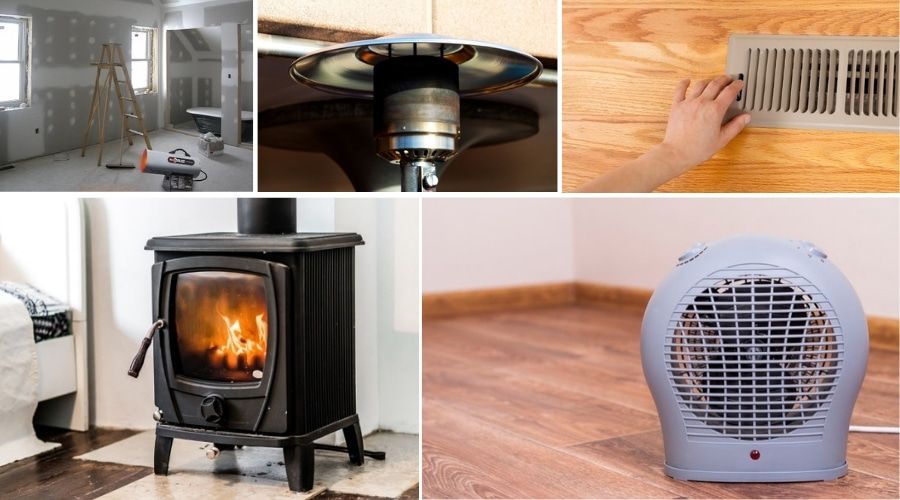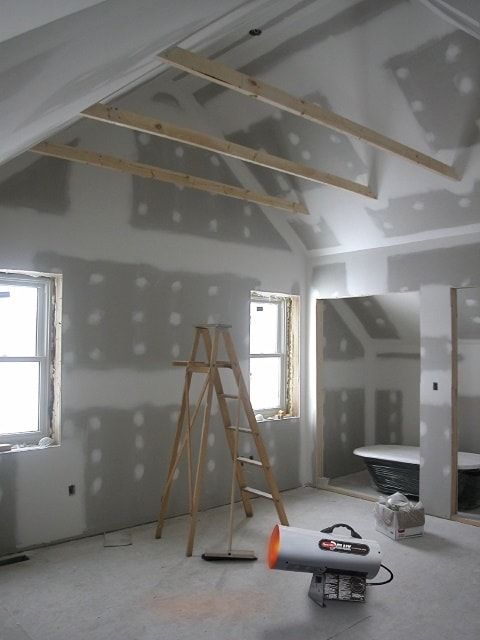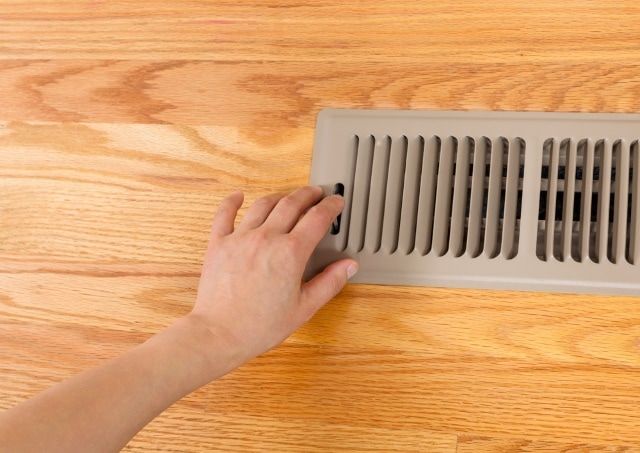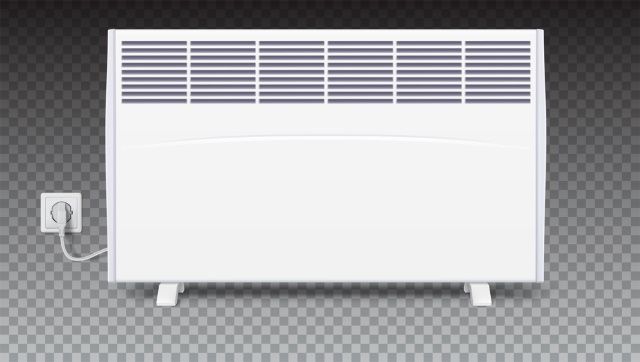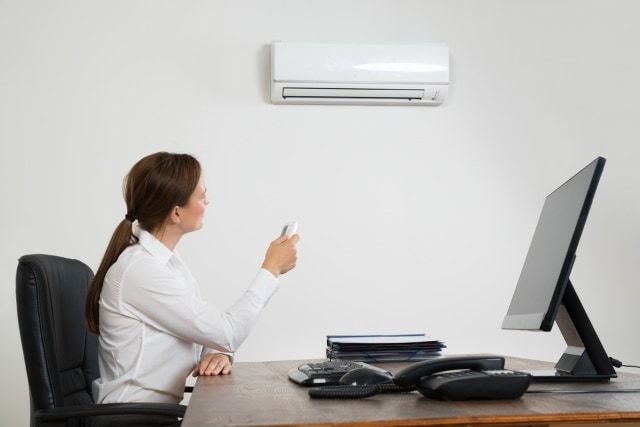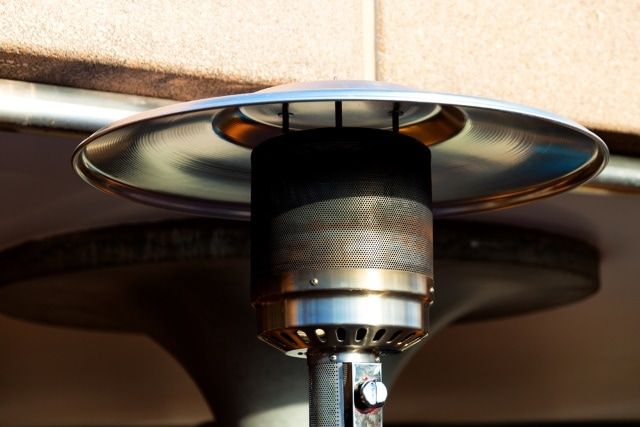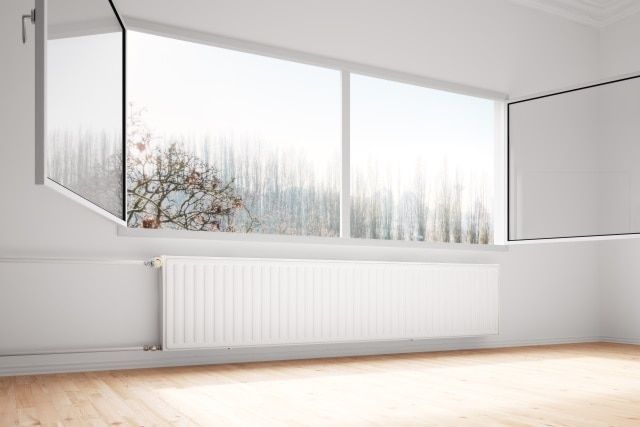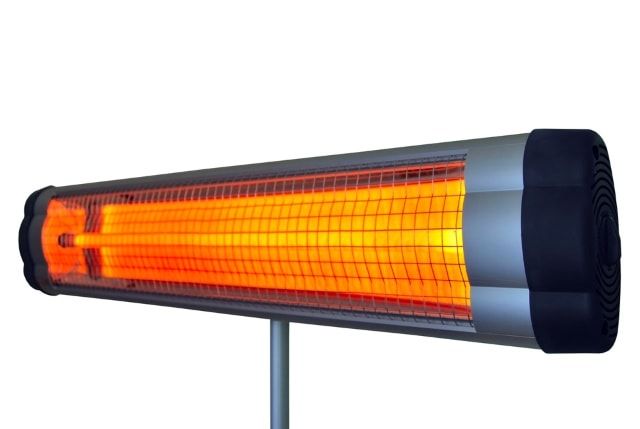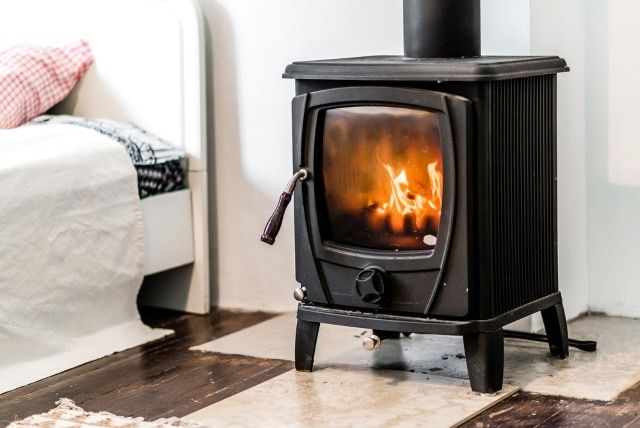Whether you happen to live somewhere cold and want to be able to get into a warm car without braving the chill or you’re looking to convert your garage into something else – a room, a shop, etc. – heat is something you’ve probably considered adding to the garage space. Of course, you’ve probably also considered the efficiency of something like heating your garage and the caveats of work involved to ensure proper insulation, installation of the heat source, and maintenance, all aside from the cost factor.
With the number of options available, finding the best ways to heat a garage for your specific application involves a little research and a lot of factoring in the details of your situation. Here, we’ve tried to take into account some of the things you should consider when deciding how to heat your garage, some tips on getting started, and the best and worst ways to accomplish the task, as well as all the options you can potentially employ to create a climate-controlled space. That way, you have a comprehensive means of making an informed decision.
Assess Your Needs
Perhaps the first hurdle you’ll have to cross is determining how difficult it will be to heat your garage space. The size of the garage is a huge factor, as well as just how cold it gets in your neck of the woods. In addition, you have to consider how well insulated the garage is or if you’re willing to renovate the garage to add additional insulation. Then, consider just how warm you want to be when you’re out in the garage and you’ll be able to better assess your options and just how much heating output you’ll need. From there, you can start with a formula that helps you determine the amount of power that will need to come out of whatever heating supply you use.
How Many BTUs?
BTUs are the measurement of output for heaters. In order to find out how strong you need the heater in your garage to be, you’ll need to follow a few steps to find out how many BTUs it will take to cover the space.
- Measure the length and width of the garage interior and multiple to get your square footage. For reference, an average two-car garage will likely measure somewhere around 500 square feet, though it may be slightly larger or smaller.
- Determine the level of insulation in your garage. If you have the same insulation as you do in your house and a finished ceiling, you can use smaller BTU devices. However, rafters and lack of insulation will accelerate heat loss, and you’ll need a more powerful unit for space.
- Additional math will be involved! Take the square footage that you found and:
- Divide that by 200.
- Multiply the result of that equation by 9,000 if your garage lacks insulation and a finished ceiling or 6,000 if it’s well insulated.
- The result will be the BTU output you need for your space. You’ll want to make sure you only consider options that can meet this need, or you won’t get the desired results from your investment.
Consider Insulation
While you could spend more on a heating option that has higher BTU output in order to heat a garage without insulation, consider the heat loss over time and that continuous expense. It could make sense to simply spend the money upfront to insulate your garage. It might seem like a large investment, but over time, you’ll more than make up that expense with the savings on heating costs. Especially if you’re the type to spend a lot of time out there doing DIY projects.
Even if you have insulated walls, consider insulating doors and either finishing or insulating an open rafter ceiling. If you live in an extremely cold climate, you can add additional protection from heat loss easily and cheaply by using plastic shrink film to cover any windows in the garage. It won’t interfere with light coming in or visibility outside but will keep the drafts to a minimum.
Heating Options
There are literally tons of options when it comes to the means by which you choose to heat your garage space. To make sure you choose the one that’s best for you, take a look at the way they work, how they are installed, the costs involved, and the pros and cons of each type of heating device or system.
Forced Air Heating
Forced air heaters literally blow (or force) hot air into a space to heat it. in most cases, forced air heating systems involve ductwork, so for this particular application, you’ll likely want to hire a professional to install the system. Forced air heating comes with one of many different kinds of units, all of which can work with several system options, including a gas or electric furnace, a heat pump, or a hydronic coil. That device then pairs with a blower of some sort, such as a fan, blower, or air handler to distribute the heated air, essentially forcing that air into your garage space.
Applications
If you’re only using your garage minimally during the cold season, this may be a bit of a larger project than you want to take on. However, if you’re converting your garage into a living space or a workspace, you might want to consider this as an option. It’s less expensive than some other duct systems and fairly efficient in terms of power consumption versus output. It’s also a good solution if you’re deciding to integrate with the existing central heating and air system in your main house.
PROS
- Forced air heating will warm your garage quickly, even if you aren’t running it full time.
- Forced air heating systems to heat all spaces relatively evenly, so you can build out the system
- These heating units filter the air before distribution.
- These systems are quite efficient compared to other options available for garage heating.
CONS
- Forced air heating systems may require a high level of maintenance (such as duct cleaning).
- Forced air heaters can be quite noisy, which may be a difficulty if converting your garage into a work or living space.
- These heating systems also blow around dirt and debris, so they may not be appropriate for garage workshops (such as woodworking).
Tips
If you decide to install a forced-air heating system to heat your garage, make sure to get multiple estimates from contractors to assure the best price. This will also help you assess the quality of work to be provided and the time it will take to complete the project. One of the best ways to assure the most competitive prices is to contact HVAC contractors and installers in late fall and early winter. This is the peak season for them, and they’ll be offering extremely competitive rates.
Always budget extra on top of the estimate, as things can go wrong – the configuration is strange or there’s a mechanical issue. If you allow for an additional 10 – 15% budget, you’ll never be surprised or worried about footing the cost. Also, obtain the parts for your forced air heating system yourself, visiting supply houses that carry the brand you need and finding the lowest price or perhaps even negotiating a lower price with the supplier.
Convection Heating
A convection heater warms the air from the top-down, with natural airflow (hot air flowing up and cool air flowing down) creating the ambient temperature based on this technology. The air passes over a heated coil, rises naturally, and then is pushed out by a fan. Some systems with convection heating actually use another fan to draw in the cool air, causing the process to work faster. Convection heaters are interesting because they come in several forms – wall-mounted, free-standing fan heaters, oil column heaters, and central furnace heaters that attach to ductwork and floor grilles. Obviously, any of these can work for a garage, but something wall-mounted, or free-standing would be easiest.
PROS
- Because they work with the natural rise and fall of air circulation, convection heaters create a very even temperature throughout the space.
- Freestanding options mean easy installation and no need for professional assistance.
- Convection heaters are virtually silent, with a little noise should you choose a fan heater.
- Compared to electric baseboard heaters, convection heaters on average are about 10 percent more energy-efficient, saving you money on power costs.
CONS
- Convection heaters don’t filter the air, leaving a great deal of dirt and dust that could become a problem if you have allergies.
- Because they don’t force air to move, convection heaters don’t provide additional circulation in an enclosed space.
Tips
Convection heater panels can cost a little more than some of the other options available for heating your garage, but it might be worth the tradeoff when you compare the expense of running some types of heating systems or needing to pay for expert installation, as with ductwork. If you aren’t planning to run the heat in your garage round the clock but want to heat the space quickly, consider using convection heating, since it’s quick and effective for an even heat, even in large spaces.
Ductless Heating
Ductless heating is an excellent alternative source of energy-efficient heat supply for a garage retrofit. Ductless or mini-split heating systems consist of two components – an outdoor condenser or compressor and an air handling unit indoors. They are connected by a conduit that houses the power cable, tubing, and drain and acts similarly to a central heating system without the need to install ductwork or connect to existing duct systems. These systems are literally made for zoned heating – heating a single space separately from other areas – making them one of the best ways to heat a garage.
PROS
- Ductless systems are relatively easy to install compared to many of the other heating options available, and while professional assistance is recommended, it won’t be as costly or time-consuming to have the installation handled.
- Versatility and energy efficiency are some of the best qualities of ductless heating systems.
- Ductless heating offers greater options for interior design and blending in with the surroundings as opposed to central heating, radiant heating, and floor heating systems.
CONS
- The installation of ductless heating systems requires careful evaluation of the size of the space to determine the right-sized unit, as well as the best location for the interior unit.
- Not all heating and air conditioning contractors are qualified to install ductless systems, so you may have to look around for the appropriate professional.
Tips
As with any professional or expert service, be sure to get multiple estimates for the price of installing a ductless heating system in your garage to make sure you get the most reasonable price. Also, check reviews on the service to assure the contractor you choose has the qualifications to install the somewhat specialized system. Make sure to do the math so you know exactly what size unit you need to make sure your entire garage benefits from the use of the heater. Consider the best location not only for maximum operating efficiency but also for unobstructed use. You should also look into rebates available for using the energy-efficient system that helps offset the cost of purchase and installation.
Propane Heating
Because you can have propane heating as a central heating system or a stand-alone unit, it has become very popular in whole house heating applications as well as single spaces such as garages. This may be one of the best ways to heat your garage because it’s easy to size and can be moved in some circumstances, in case you aren’t exactly looking to heat the whole space. Propane furnaces can be centralized or can be a single wall unit that is sized to heat a smaller space like a garage. However, there are also combination heat systems that can also heat appliances, such as your water heater, which will then offer additional radiant heat in the space. Propane is extremely energy efficient and can be a very cost-effective way to keep your garage cozy during the winter.
PROS
- Maximum heating efficiency on propane heating systems can achieve a rating of 8 percent higher than other heating systems.
- Propane is a relatively inexpensive fuel type, making it easier on the pocketbook.
- With propane heating, you don’t have to run the system all the time and can still benefit from a quick warm-up when you enter your garage and turn it on.
- You have multiple options for the type of system you want to install with propane, depending on the purpose of your garage.
- Propane heating systems require far less maintenance than almost any other type of heating, including oil or gas-fired furnaces.
CONS
- The upfront cost of a propane system can still be a bit daunting but is far less than a central heating system and doesn’t require an expert to install if you’re using a single space unit.
- You’ll need to inspect your propane system regularly to assure you don’t have a fire hazard on your hands.
Tips
One of the most interesting things about propane systems is the ability to fuel appliances. So, if you’re considering creating a ‘man cave’ in your garage and want to have a stove or other appliance aside from heating the space, you can get a propane system that will take care of both with excellent energy efficiency. Also, in a garage where insulation and loss of heat are so important, the propane heating units don’t lose nearly as much heat as a typical oil furnace, which banks on heating and cooling and leads to an initial loss of about 30 percent of heat, even before concerns over proper insulation.
Sealed Combustion Heaters
A sealed combustion space heater draws clean air from outside into the system and vents exhaust outdoors, which can be ideal for an insulated garage space used for a shop or mechanic’s area. The combustion chamber provides the heat, and it’s a particularly interesting option for efficient heating if you already have natural gas or propane fueling in your house or garage space. While you’ll likely need expert assistance installing this type of heating unit, the wall-mounted system is more convenient than something on the floor and easier to install than an extension to central heating or a forced-air system.
PROS
- Stand-alone control means you can turn it on only when you’re in your garage, while you don’t need a separate fuel source from the rest of the house.
- Ventilation and outdoor air usage make a sealed combustion heater ideal for workshops since there is no chance of wood shavings, dust, or metal shaving and whatnot getting into the unit.
- Combustion heaters work quickly, warming the space in no time so you only have to run them when you expect to be spending time in your garage, which conserves energy.
CONS
- The location of the sealed combustion space heater is limited because it has to be near the exterior wall of the garage, or it can’t connect to the vents.
- Sealed combustion heaters have limited space heating capabilities so many not be ideal for large garage spaces.
Tips
If you don’t have gas or propane, you may want to consider installing a propane fuel source for your sealed combustion heater. This would likely be the most economical choice for fuel sources. However, if you don’t have a source of energy pulled into your garage, you may want to consider a different type of heating space. Combustion heaters are fast and effective in a well-insulated space, but you’ll want to consider that there are more energy-efficient sources available for a reasonable cost.
Electric Ceiling Panel Heating
Everyone has a different purpose for wanting to heat their garage. If you’re considering making this a living space or maybe a space to entertain the company, you probably want to choose a heating source that isn’t an eyesore. With that in mind, it’s hard to go wrong with radiant electric ceiling panels. These panels are slim and look good on the ceiling, and because they’re mounted overhead, you don’t have to worry about them interrupting the design of your space. They are unobtrusive and can be a great energy-efficient way to heat a single space like a garage.
PROS
- Electric ceiling panel heating can save you around 33 percent on the average heating cost of a space such as a garage.
- Because they can be dropped into a frame ceiling like any other tile, ceiling panel heaters are incredibly easy to install, especially compared to other alternatives.
- As opposed to forced air systems, you can easily replace an electric ceiling panel rather than dealing with costly repairs.
- Ceiling panel heating heats without drying out the air, which can lead to nosebleeds, brittle hair, and flaky, dry skin.
CONS
- While you save on the cost of energy, ceiling panel heating isn’t quite as effective as some other systems because heat rises, meaning that the floor of your garage might still be cold (not ideal for a mechanic’s space or a workshop).
- You’ll need a finished ceiling to install radiant ceiling panels. That could require additional contract work and incur high costs if your ceiling isn’t already finished.
Tips
If you want your space to heat and cool quickly, radiant electric ceiling panels are a good bet. While a number of options for heating your garage involve quick heating, they don’t necessarily cool as quickly when turned off. That can be problematic if your garage is well insulated and heats up to an uncomfortable level over time. If you need to finish your ceiling to install the panels, be sure to hire a roofer rather than an HVAC technician and explain your purpose in wanting a tile ceiling so the professional can give you an informed estimate and prepare the area properly for your needs.
Mounted Electric Heaters
If you’re looking for something convenient and easy to install that will still offer you excellent heating for your garage, consider a wall-mounted electric heater. While these work similarly to space heaters, they are typically larger with more power and can heat the entire space to a comfortable level. They’re an excellent choice for short-term heating if you aren’t going to spend all day every day in your garage during the winter, but they are powerful enough to continue running for long periods of time if that’s what you need. This makes them versatile, and they tend to be very efficient and not costly to install or operate. You may need to get assistance pulling in a 240-volt electricity source to run your unit, but otherwise, it’s fairly easy to mount the units.
PROS
- Wall-mounted electric heaters are efficient in both upfront and operational costs, making them a very economic decision.
- Because they have an auto-shutoff at certain heat thresholds and don’t get hot enough to combust, mounted electric heaters are easy and safe to operate.
- These heaters are small and versatile, and they are plug and play for easy installation, making them versatile and preferable for many to more complex heating systems for garages.
- Wall-mounted electric heaters warm space quickly so you don’t have to run them all the time or turn them on in advance of going out to your garage space.
CONS
- You may have to deal with long cords in order to power your wall mounted electric heater since this isn’t an interior wiring job.
- If you have a very large garage – 3- or 4-car – you may need multiple units to heat the entire space thoroughly, as wall mounted electric heaters aren’t made to heat large, house-sized spaces.
- The heater itself will heat quickly, but if you have a larger space, the distribution of that heat may take a little longer than central heating or other systems with heating ducts.
Tips
When you get ready to install your wall mounted electric heater, make sure you have the proper tools available, and it will be a quick, simple job. You’ll need drywall screws, electrical tape (possibly), and perhaps plywood, especially if your garage isn’t finished out. The plywood can serve as the backing to the unit when you mount it. Make sure you are using studs for mounting since electric wall heaters aren’t exactly lightweight. You may also need something to help cover the cord or wind it and store it if it’s too long. if you don’t have 240-volt outlets, contact an electrician and have one installed. Most wall-mounted electric heaters run the 240-volt power.
Portable Space Heaters
Perhaps the most cost-effective way to maintain heat in a garage is with portable space heaters. These are inexpensive to purchase and, if you choose one rated for energy efficiency, you can run several of them if needed without a major impact on the cost of electricity. If you’re only using a small part of the garage, such as a workbench or lying under a car while doing engine work, a single space heater could be sufficient, especially since it can follow you to different areas of the garage and keep you warm without the need for additional insulation or waste of energy heating the entire space. If you do want to keep the entire garage warm while you’re in there on a budget, you can purchase larger sized portable heaters and install more than one for heat distribution.
PROS
- Portable space heaters save you on front-end costs with no need to pay for installation – or even installation materials – and a lower cost for the units, as well as operational costs when choosing energy-efficient models and running them only as needed.
- Space heaters are portable and can cover only the space necessary or at least keep the immediate area around you even warmer on the coldest of days, still using far less electricity to maintain the same temperature compared to central heating.
CONS
- Care is required to avoid burns, as the surface of a portable heater can get very hot.
- Portable space heaters shouldn’t be used too close to furniture, wood, or cloth (such as drapes) as they can be a fire hazard.
- Space heaters are meant for small spaces, and your garage could require multiple portable heaters for sufficient heating, depending on how large it is.
Tips
When you decide to purchase a portable space heater, shop around, considering cost, size, efficiency, and safety features. Many space heaters have an automatic shutoff feature if they reach a certain temperature threshold. Only use the space heater when you’re in the garage and don’t leave it running in an unsupervised space to avoid any safety concerns. Be sure you’re prepared to pay attention as you move around your garage if you’ve chosen to use portable space heaters, and if you’re only using one, try to remember to take it with you when you move to a new area of the garage so you stay warm and don’t have to worry about any accidents.
Infrared Heaters
An infrared heater is a very efficient alternative to a forced-air heating system. Low-intensity infrared heaters utilize a heating tube that then radiates heat through your space. You’ll notice that the objects in your garage will heat up first, as that’s how infrared heat distributes. This will create a nice, ambient temperature, followed by your own body warming to that temperature. You can power an infrared heater from a variety of sources, including electricity, natural gas, and propane, making them diverse in nature. Best of all, infrared heaters are meant for spaces like garages that aren’t well insulated, giving you that ambient heat that seeps into the surrounding objects rather than simply warming the air and losing warmth through lack of insulation.
PROS
- Infrared heaters are very powerful and can heat a space that isn’t well insulated (such as a large garage) quite effectively.
- Because of the way they work, infrared heaters are extremely energy efficient and actually heat a space quickly.
- The formation and materials used in infrared heaters, including their heating coils, making them very durable and long-lasting with little maintenance required.
- Unlike even central heating units, infrared heaters are incredibly quiet, often seeming silent in the ambient environment.
- Infrared heat is very healthy since it doesn’t consume a great deal of oxygen in the air and maintains the moisture required to avoid health issues and discomfort.
CONS
- The area an infrared heater can warm is limited because it is a ‘space’ heater, and this might not be ideal for a larger garage.
- Heat is short-lived with many infrared heaters, meaning that you can’t shut them off for long during an extended stay in the garage and expect to stay warm.
Tips
When choosing to purchase an infrared heating unit, don’t consider options with the exposed heating element (the glowing red of a portable space heater). These will be better suited to your garage space if you opt for the enclosed tube that is much safer and less likely to cause burns if you brush up against it for any reason. Also, consider the size of your garage. If you’re going to have to purchase an extremely large or powerful unit in order to heat your entire large garage, it may be just as cost-effective to consider a different option in terms of upfront cost. Also, note that you may need a qualified installation expert to connect your infrared heater to the house heating source (electric, gas, or propane).
Wood Burning Stove
When it comes to truly economical options, a wood-burning stove can’t be beaten to heat your garage. Contrary to the name, you don’t have to go out and buy a lot of wood to fuel the stove, though even that can be much less expensive than round the clock central heating. Brush clippings, fallen twigs, leaves, and lawn clippings that have dried out can all be used to stoke the fire in a wood-burning stove, which is one of the most efficient and effective ways to heat a singular space. This old ‘technology’ works as an infrared heater, letting the incredible heat internally warm the air around it without using any power at all. In fact, this means of heating your garage can be effective without additional insulation due to the massive heat output, though it will always be more efficient to have proper insulation.
PROS
- Fuel for wood burning stoves is far cheaper than any other source with no energy rates to consider, and you can even grow your own woody biomass to burn, negating any cost at all, save for the initial purchase and installation.
- Catalyst wood stoves burn very cleanly and are environmentally safe; in fact, using forest waste can improve forest health.
- Wood burning stoves are extremely efficient and can heat a large space to a great warmth that lasts a long time
- Fuel prices for wood burning stoves is stable, and fuel is readily available, renewable, and sustainable.
CONS
- To install a wood burning stove in your garage, you may need to get permits and other approvals from your community.
- Some homeowner’s insurance policies don’t allow for wood burning stoves due to perceived safety hazards (though these are not much different than the dangers of a wood burning fireplace).
- Ashes need to be cleaned between burning sessions and disposed of to keep the wood stove burning cleanly and effectively.
- Some wood-burning stoves operate at such a level of heat that they may be too much for a smaller space; in addition, this high heat can make it dangerous to feed the fire, requiring caution and a need for a clear understanding of operation on your part to remain safe.
Tips
One way to assure a clean-burning experience is to opt for a pellet stove, which burns compressed wood pellets. However, these often require some electricity to function and may offset the idea of saving the money on fueling. You may also want to consider the space required to store the fuel so it’s ready to go when you need it. However, the enormous amount of heat for the low cost, despite some of the caveats of using a wood-burning stove, make it incredibly worthwhile, especially if you live in a more rural area and don’t have to worry as much about regulations or have access to regular fuel sources.
Conclusion
Obviously, choosing a source for heating your garage can be difficult, with a lot to consider in the process. However, there are two options that clearly rise above the rest in terms of efficiency and effectiveness. For the most part, while any of these systems will work in various applications, one of the best ways to heat a garage overall is with the use of an infrared heater. These heaters are not only cost-effective in their operation but also provide a quick warmup and a low profile with minimal need for help with installation and a durable, long-lasting build. In addition, they are much safer than a portable space heater, which uses the same type of functionality but could more easily cause a fire.
Second to that, if you have the space to store fuel – or access to regular fuel – and a lack of zoning and regulations to adhere to, as well as the agreement of your homeowner’s insurance company, a wood burning stove is literally the most efficient source of heat for your garage space. You never have to power it with an external energy source, and with care and safety precautions, as well as regular cleaning, you can expect the wood burning stove to provide incredible heat and outlast almost any other appliance you own.

